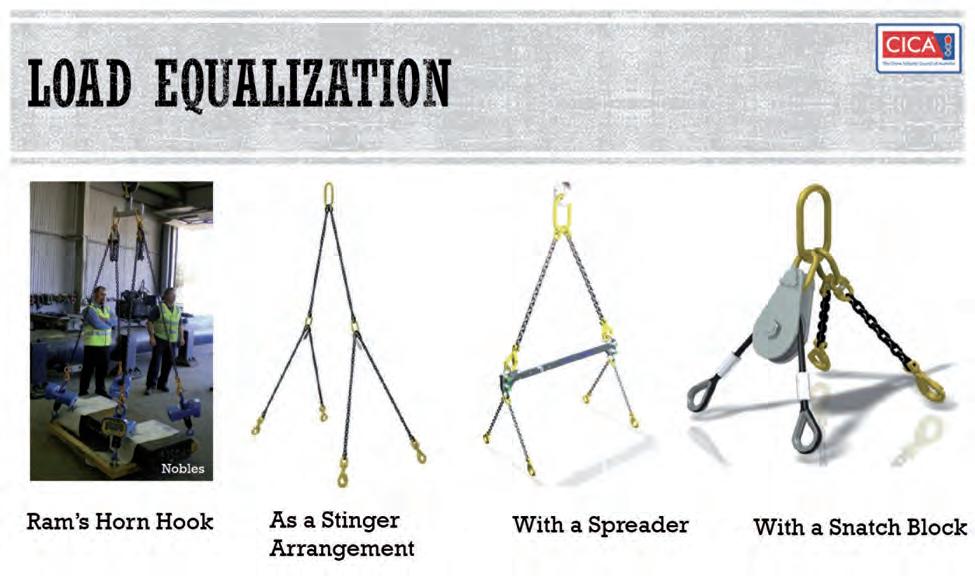
5 minute read
CICA Tech Corner
PLAN FOR THE FUTURE – CICA LIFT SUPERVISOR PROGRAM
In this article, the Crane Industry Council of Australia’s (CICA) technical committee examines the causes of accidents and emphasise the importance of training the ‘right way’.
IN 2015, A GROUP OF RMIT
researchers wrote a paper entitled ‘Causes of Fatal Accidents Involving Cranes in the Australian Construction Industry’. This paper investigated crane-related fatalities to find the upstream causation of such accidents.
One thing worth noting in this paper was that one of the more prevalent causes was unsafe actions taken by workers, including the crane operator and workers in the vicinity of the crane. The level of skill and knowledge of workers was also identified as being a relevant shaping factor.
To fill the skill, experience, and knowledge gaps of the crane crew members between their high-risk work licence (HRWL) training and the practical operations for the lifting jobs on site, CICA, together with a group of industry experts from crane companies and construction contractors, developed a training curriculum called the CICA Lift Supervisor program.
With course content developed by industry experts who, on average, each have 20-plus years of experiences, and know all aspects of cranes and lifting operations like the back of their hands, this program will benefit the overall crane industry by improving overall safety performance. It will also benefit the crane crew members as the program provides a pathway for them to progress to the next level of their crane and lifting career.
The program has two levels: • Level 1 aims to train the crane crew members to become a site leading hand/crew leader, or to improve the competency of the crane crew members in general.
Level 1 attendees should possess a
C6 or above HRWL crane licence and an intermediate rigging licence, with at least two years of crane industry-related experience. Level
1 graduates will be crew-embedded roles, responsible for supervising safe lifting operations and following the lift plan prepared by the relevant competent person. • Level 2 aims to train the crew leader to become the site lift supervisor.
Level 2 attendees should be a graduate from the Level 1 training, qualified engineers, or someone who has at least five years of crane industry-related experience. Level 2 graduates will be responsible for overseeing and managing the plan, set-up, and safe and efficient operation of lifting equipment.
The lift supervisor will work with internal and external stakeholders and will be responsible for coordinating and supervising all lifting activities in accordance with regulations.
The core topics that will be covered in the program (for both levels) includes three parts: work health and safety; leadership and frontline management; and lift supervision and transport activities.
Level 1 training topics include: • Engineering principles • Crane operation, different types of cranes, how to use crane charts • Different types of slings, sling selection, sling care and inspection, standard rigging methods, sling load calculation, read and interpret sling diagram • Develop simple lift plan (for example, single crane single hook, less than 90 per cent capacity, returnable lift) • Ground condition, weather condition, environment restraints • Read and understand lift plans and drawings • Experience on specific/complex lifts (e.g., multi-hook, precast, marine) • Crane road travel, interpret and perform transport load restraint • Basic understanding of cranerelated work health and safety regulations • Basic understanding of cranerelated Australian Standards • Write and develop a safe work method statement (SWMS) • Incident/accident response • Conduct toolbox talks with crew members • Leadership skills • Effective communication with crew members
Level 1 training content includes both the review of the crane crew member’s previous HRWL training and skills, and knowledge that is not covered by HRWL training but essential for the crane crew member to perform the role of crew leader for safe lifting operation on site. For example, skew load factor, load share principles between multi-crane or multi-hook lifts, information from the latest version Australian Standards, Chain of Responsibility requirements when driving cranes on road, etc.
Level 2 training content is more focused on specialist lift planning skills. Various engineering design topics will be explained to the attendees. The Level 2 course will be delivered by elite lifting planning experts like the CICA technical committee members. The three parts of the Level 2 training topics includes: • Knowledge and implementation of engineering principles, use of different design factors in calculations for lift planning • Using Australian Standards for cranes and rigging gears in lift planning • Lift planning (complicated lifts),
plan, perform and manage design lifts/engineered lifts • Developing drawings (plan, elevation, rigging diagram) for lift planning • Sling design (calculations, drawings, custom design rigging equipment) • Lifting stability design and review • Change management • Familiarisation with and understand of work health and safety regulations and requirements • Writing and developing SWMS • Conducting high risk workshops • Incident/accident investigation, lessons learnt summary • Project management skills • Leading teams, effective communication with team members
In addition to the course content lectures, there are various supporting materials (CICA technical documents, ICSA papers, updates on Standards, updates on WorkSafe authority requirements, etc.) available for access by attendees after completing the program for their continued knowledge and skills development.
Improving safety is a goal for everyone working in the construction business. With the ongoing boom of the infrastructure projects, the lift supervisor program will be a good tool for crane companies to plan for their future operations.
Improved competency of crane crew members means fewer incidents/ accidents, injuries, and property damage if an incident occurs. This, in turn, saves money for the company through lower accident and insurance costs.
This program reflects CICA’s mission of improving the health, safety, and wellbeing of crane industry personnel, as well as driving compliance with applicable legislation and regulation, skills and knowledge passed on from the lift supervisor program attendees to the crane crew, which will benefit the industry.










